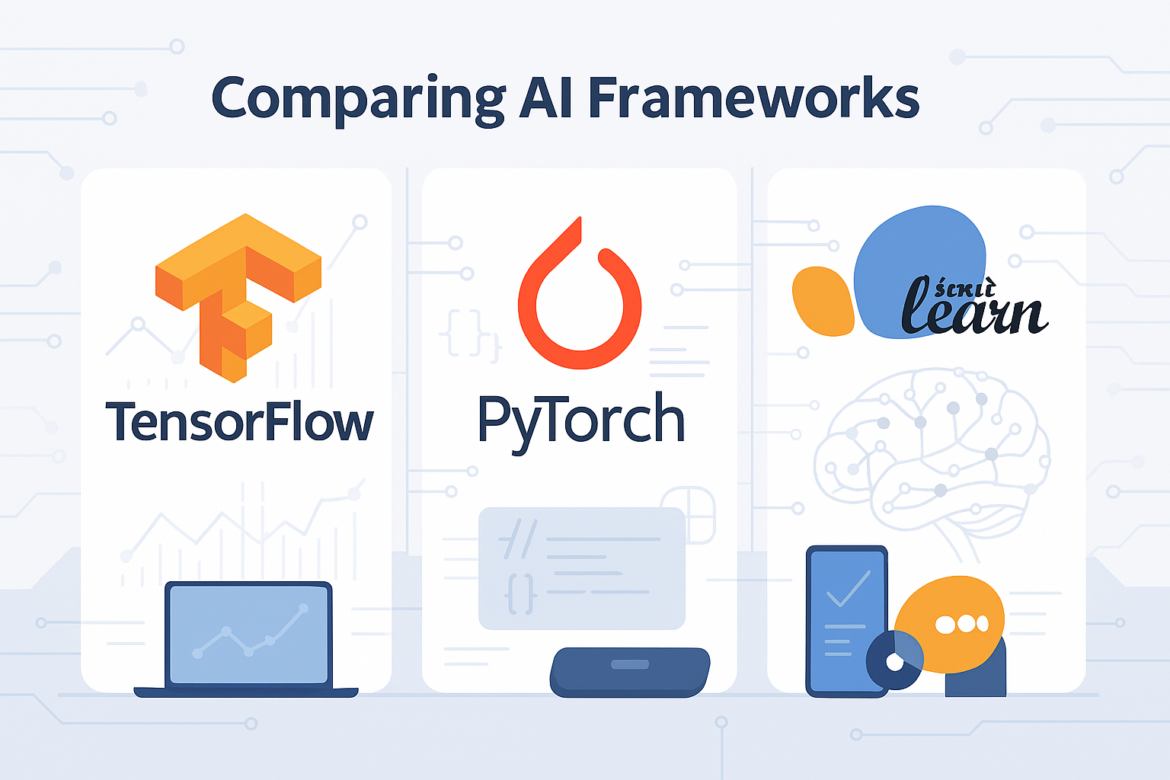If you’re exploring the world of AI or machine learning, picking the right framework can change everything. TensorFlow PyTorch, and Scikit-Learn are three tools that developers and researchers use the most. Each one serves different purposes, so understanding what makes them special is helpful. Let’s explain this in a simple way for beginners.
What is an AI Framework?
An AI framework resembles a toolkit filled with pre-made tools to help you create smart applications. These frameworks offer useful functions to build, train, and check machine learning models and well instead of writing everything from the ground up.
TensorFlow – Made for Large, Strong Projects
Google’s TensorFlow is a top pick for building big AI systems or deploying models on different platforms.
Why It Stands Out:
- Excels in deep learning and neural networks
- Works on phones, browsers, servers, and more
- Has Google’s backing and strong community support
What You’ll Love:
- It grows from small to massive projects
- You can run it on CPUs, GPUs, or TPUs
- You’ll find lots of guides and resources online
Best For:
- Businesses creating AI apps
- Programmers who need to put AI on various devices
- Groups working on market-ready solutions
PyTorch – Flexible and User-Friendly
Facebook created PyTorch, and researchers and developers love it because it gives them more control and flexibility when they build models.
Why It Stands Out:
- It’s easy to use and great for experiments
- You can watch things happen step-by-step, which helps you fix problems
- Universities and research labs like it
What You’ll Love:
- Its design makes sense, so beginners can pick it up
- You can build and test ideas
- The community helps out, and more people are joining in
Best For:
- Projects in research and schools
- Testing new ideas fast
- New learners who want an easier start
Scikit-Learn – Simple and Great for Classic ML
Scikit-Learn is a small Python library that excels in traditional machine learning such as classification or regression tasks.
Why It Stands Out:
- Simple and easy to use
- Plays well with Python tools like pandas and NumPy
- Includes many standard ML models
What You’ll Like:
- Great to learn machine learning basics
- Quick to set up and grasp
- Useful for data analysis and fast tests
Best For:
- Newcomers to machine learning
- Small- to medium-sized datasets
- Standard ML models (not deep learning)
Quick Comparison
| Feature | TensorFlow | PyTorch | Scikit-Learn |
|---|---|---|---|
| Deep Learning | Yes | Yes | No |
| Traditional ML | Some support | Some support | Yes |
| Ease of Use | Moderate | Easy | Very Easy |
| Best Use Case | Large applications | Research and testing | Classical ML tasks |
| Hardware Support | Excellent (TPU/GPU) | Good (CPU/GPU) | Basic (CPU only) |
